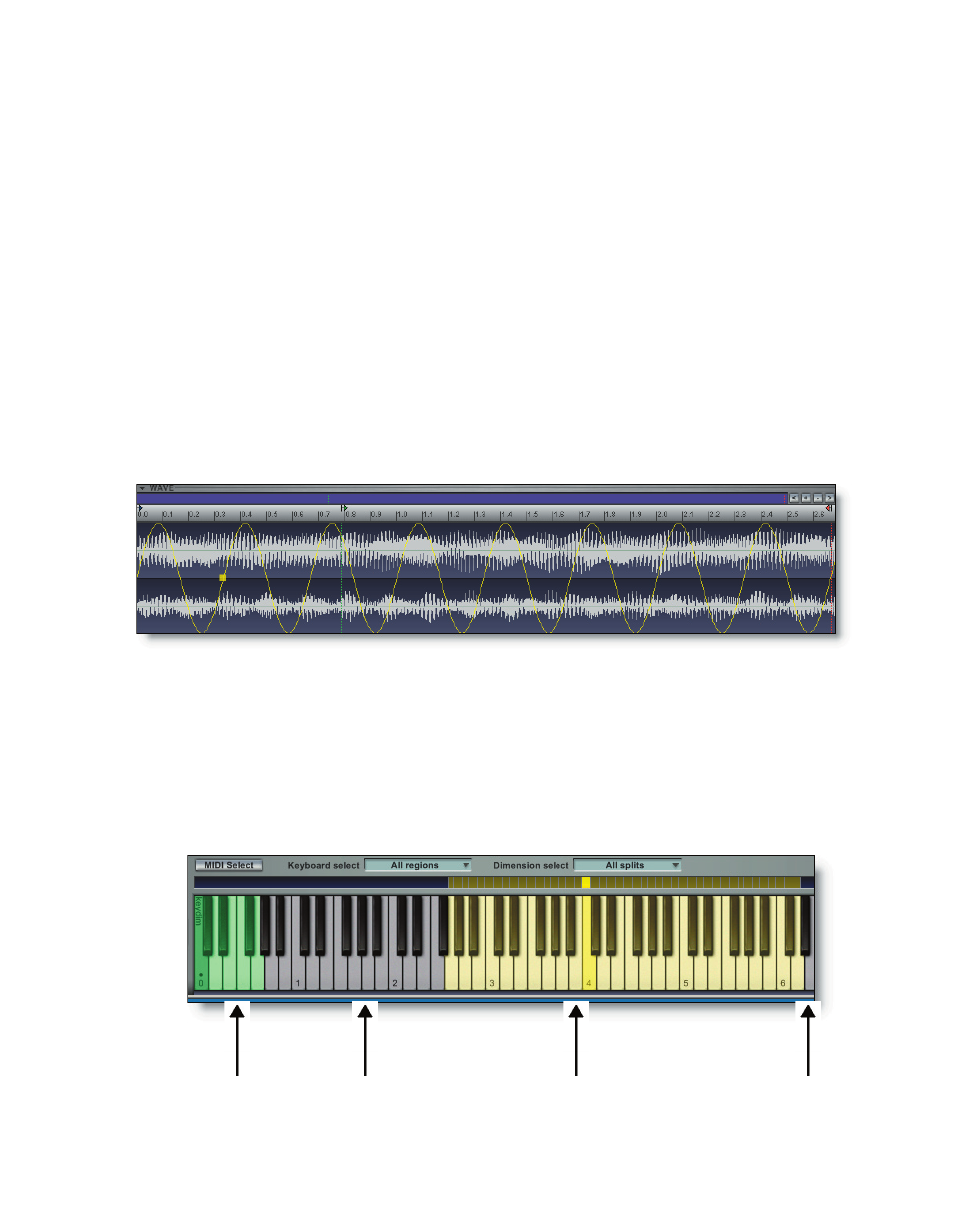Keyboard view – Teac GigaStudio 3 User Manual
Page 179

178
179
poses. These lines exist on top of the waveform view with node points for dragging to
adjust their values. The color and style for the different control types are as follows:
Envelope 1 (amplitude) : Yellow lines connecting the nodes of the envelope.
Envelope 2 (filter) : Purple lines connecting the nodes of the envelope.
Envelope 3 (pitch) : Blue lines connecting the nodes of the envelope.
LFO 1 (amplitude) : Yellow sine wave with a single node for adjustment.
LFO 2 (filter) : Purple sine wave with a single node for adjustment.
LFO 3 (pitch) : Blue sine wave with a single node for adjustment.
To adjust the envelopes and LFOs, select a control type and drag the nodes in the
wave view to adjust the individual parameters. The edits are immediate and are saved
with the performance. These are non-destructive edits in that the original instrument
is not affected by the QuickEdit functions. To make a permanent edit to an instrument,
load it into the GigaStudio 3.0 Instrument Editor.
To manipulate the displayed view of the waveform, click the scroll and zoom buttons
located at the far right end of the wave view. Click the + / - keys to zoom the view of the
waveform. It is possible to zoom from single sample resolution out to the view of the
entire waveform. Click the < / > keys to scroll the view of the keyboard.
Keyboard View
The QuickEdit keyboard is an additional virtual keyboard providing a visual layout of
the instruments note range as well as any dimension keys.
Keyswitches
(green keys)
Unassigned
(grey keys)
Unassigned
(grey keys)
Active range of instrument
(yellow keys)